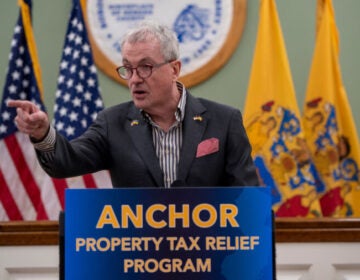Will the Community Sustainability Initiative turn City Council into planners?
This week City Council returns for its fall session and something we’re likely to hear a lot about in the coming months is the “Community Sustainability Initiative” (CSI), a new program which Council announced in August.
CSI is intended to help City Council take a data-driven approach to public spending based on seven different measurements of neighborhood health – from housing and commercial corridors to public amenities and education. These metrics, not just which neighborhoods are best organized or outspoken, will influence neighborhood improvement strategies over time.
CSI is based in research and analysis from consulting firms Econsult and The Reinvestment Fund (TRF). Neighborhoods deemed “distressed” have greater needs than those categorized as “regional choice” that have already met the benchmarks of success – and that should guide decisions about public investments. CSI will provide a framework, guided by real data, for deciding how to tailor policy and spend scarce public resources in different areas of the city based on different neighborhood needs. This research will be rounded out by neighborhood feedback.
The data-driven approach to CSI sounds a whole lot like the foundational thinking behind the Neighborhood Transformation Initiative (NTI) that was rolled out under Mayor John Street. There, too, TRF also provided market value analysis with an eye toward guiding public investments, which were paid for in NTI’s case by a $295 million bond initiative.
CSI sounds an awful lot like work the Philadelphia City Planning Commission has already been doing under the citywide comprehensive planning effort, Philadelphia2035, and 18 related district plans to give different areas of the city policy and spending recommendations. The citywide vision was adopted by City Council in 2011 and the district plans are still in progress. Like CSI, the commission’s work is based in robust data analysis and neighborhood input sessions, with the goal of improving quality of life throughout the city. District plans make investment priority recommendations for each district, but those priorities aren’t weighed against spending in other parts of the city.
To me CSI is a bit of a head-scratcher – Why is City Council paying consultants ($43,000 so far to Econsult and TRF) to do what the Philadelphia City Planning Commission is already kind of doing? Similar data sources. Same neighbors. So why duplicate efforts? Is CSI just planning with fancy branding and Council’s imprimatur?
Of course, data answers the questions we ask it. But could it be that CSI will inadvertently make councilmembers into smart city planners?
So should the planning commission have done CSI in-house? We asked and it turns out that while the commission has the skills, it does not have the bandwidth.
“I don’t think we would have had the time to do it as a separate project,” planning commission director Gary Jastrzab told my colleague Kellie Patrick Gates in a recent interview.
Given the planning commission’s current staffing, workload, and funding level, the agency is stretched. To take on a project like CSI – from specific data analysis, mapping, and public outreach – they’d need additional resources. But that’s not to say that the commission objects to or feels jilted by City Council’s efforts.
“The principles and concepts, we wouldn’t disagree with,” Jastrzab said. Had the planning commission known about CSI in advance, he added, they would have been happy to play an advisory role. And planning is certainly willing to work with Council as CSI develops.
“These things are complementary,” Jastrzab said of the commission’s comprehensive planning work and City Council’s CSI work. “We are all attempting to achieve the same goals.”
Still, because planning commission is deep into a multi-year district planning effort that establishes public spending priorities for each neighborhood in the city, why isn’t Council deliberately coordinating CSI with district plans?
In a way, CSI is about City Council wanting its own framework for decision-making, not necessarily guided by an arm of the mayor’s administration. And frankly, some on City Council get urban planning more than others.
Council members’ offices and the planning commission frequently collaborate and communicate, stressed Eleanor Sharpe, the commission’s Deputy Executive Director for Legislative Affairs. Still Council members’ understanding of the commission’s work varies.
Remember when Councilwoman Jannie Blackwell wanted to hold hearings about Philadelphia 2035? Or when Councilman Brian O’Neill introduced bills to remove certain uses on mixed-use commercial corridors, which were more restrictive than the zoning code he helped write as a member of the Zoning Code Commission.
Or consider Council President Darrell Clarke’s quip to a reporter after the CSI press conference asking him about the confluence of CSI and similar planning work already done as part of Philadelphia2035: “I’m more concerned about 2015, 2016, 2017.” As though the planning commission is not?
But, to Clarke’s credit, he also acknowledged that District Plans could also inform CSI. “The reality is we’re going to work together,” Clarke said.
When asked if CSI could help council members look at planning-related decisions more like the planning commission does, Sharpe said she hoped it would and “it probably will.”
Maybe the great-unintended consequence of CSI is giving Council a little dose of persuasive planning kryptonite.
Given solid information, and the will to trust it, Council could actually be guided by independent findings that echo recommendations in Philadelphia2035’s Citywide Vision and the priorities set in individual District Plans. That could put Council and PCPC squarely on the same page. Wouldn’t that be something?
WHYY is your source for fact-based, in-depth journalism and information. As a nonprofit organization, we rely on financial support from readers like you. Please give today.























